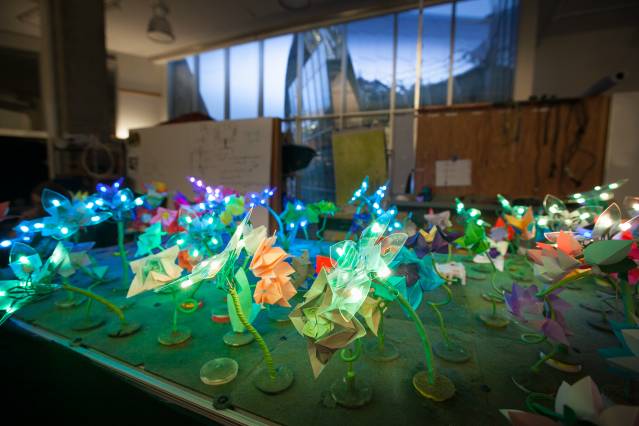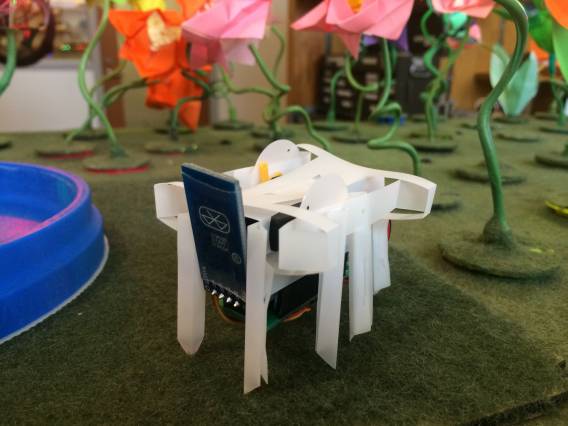You don’t have to be a kid to get excited about a “robot garden” with tons of fast-changing LED lights and over 100 origami roots that crawl, swim and blossom like flowers, but MIT has created such a sight to engage kids in the coding world.
 (Photo: Jason Dorfman/CSAIL)
(Photo: Jason Dorfman/CSAIL)
A team from MIT’s Computer Science and Artificial Intelligence Lab (CSAIL) and the Department of Mechanical Engineering joined forces to create a tablet-operated system that exemplifies its research on distributed algorithms using robotic sheep, origami flowers that open and change colors and robotic ducks that fold into a shape after being heated in an oven as a way to get more young students, girls in particular, interested in programming.
The system can be managed using a tablet or any Bluetooth-enabled device with a click feature that lights up individual flowers or an advanced “control-by-code” feature in which users can insert their own commands and execute sequences in real-time.
The system consists of 16 tiles connected via Arduino microcontrollers and programmed with search algorithms such as “graph-coloring” which ensures that no two adjacent tiles in the garden ever share the same color.
“The garden tests distributed algorithms for over 100 distinct robots, which gives us a very large-scale platform for experimentation. At the same time, we hope that it also helps introduce students to topics like graph theory and networking in a way that’s both beautiful and engaging,” said Daniela Rus, CSAIL Director at the Andrew and Erna Viterbi Professor of Electrical Engineering and Computer Science.
Before taking on this robotic-gardening project, Rus helped develop a system of robots that watered, harvested and took metrics of an actual vegetable garden.
Watch the LED robot garden from construction to final product.
The garden consists of eight varieties of origami flowers such as lilies, tulips and birds of paradise which contain printable motors which allow them to blossom in unique ways. There are also some sheep robots in the arrangement which were created with traditional origami techniques and some magnetic ducks that started as two dimensional paper prints that were heated in an oven and automatically folded into a duck shape.
 Robotic “sheep” created through traditional origami techniques. (Photo: Joseph DelPreto/CSAIL)
Robotic “sheep” created through traditional origami techniques. (Photo: Joseph DelPreto/CSAIL)
Since most of the garden's components can be created quickly, MIT’s hope is that rapid fabrication techniques will improve even more and the garden could be incorporated into standard classrooms— allowing even more students to learn about programming this way.
MIT researchers showed off their garden at local schools during CSAIL’S “Hour of Code” event in December and want to include it in a programming curriculum involving printable robots that has already been developed for middle and high school students.
Story via MIT News.
Advertisement
Learn more about Electronic Products Magazine





